Patting down the data on racial profiling in New York City
An analysis of racial disparity in NYC's stop and frisk numbers also reveals the diminishing returns of the policy.
by Peter Wagner, May 10, 2012
This piece was originally prepared as one in a series of guest posts for the Prison Law Blog.
New York City’s “stop and frisk” policing strategy is getting a lot of attention. A police officer notes a “reasonable suspicion,” whatever that is, and then stops the person, asks some questions and then often frisks him or her.
It’s not hard to see where allegations of racial profiling come from. It’s the subject of a class action lawsuit, and last week 20 people, including Cornel West, were convicted for a civil disobedience protest last year against stop and frisk.
“Stop and frisk” is a major NYC initiative that is growing:
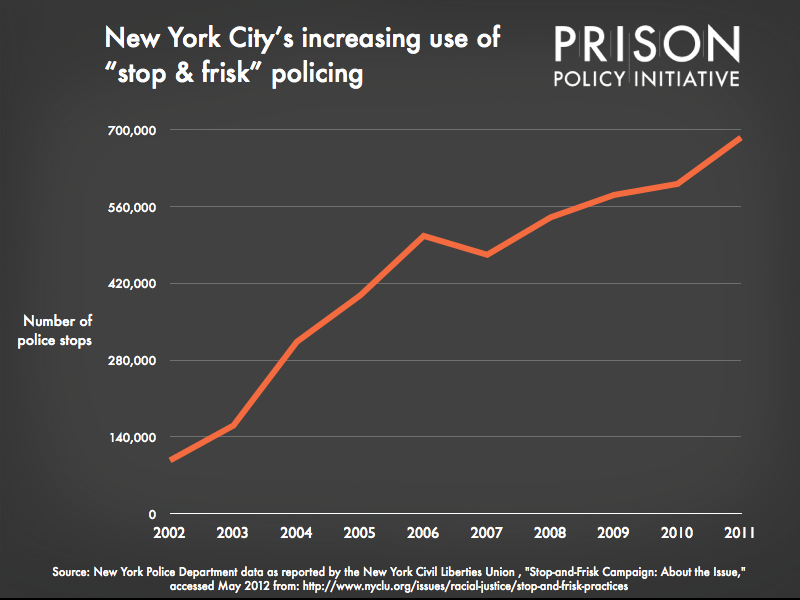
The majority of the people being stopped and frisked are Black and Latino, and that’s been a consistent fact:
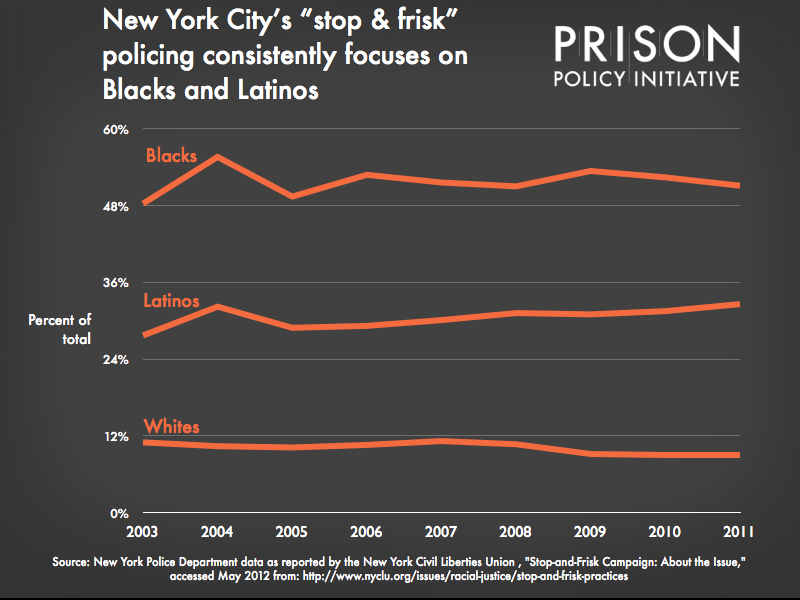
A lot of the news coverage has been less than effective in explaining the racial disproportionality in New York City’s stop and frisk. For example, Blacks are 52% of stops, but 23% of the population. Latinos are 31% of stops, but 29% of the population. Whites are 9% of the stops and 33% of the population. The eyes of 90% of the readers of this paragraph have glazed over and I suspect that 100% of the people reading aren’t quite sure exactly what the significance is.
The most useful comparison is to compare the relative number of people in each racial and ethnic group who are stopped by the police in a given year. Now it’s quite clear just how big the problem is:
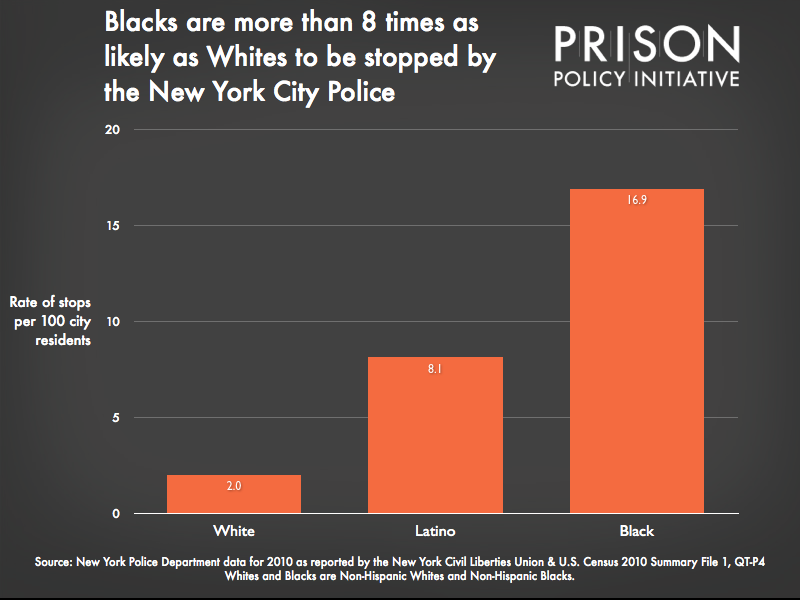
Blacks in New York City are 8 times as likely to be stopped by the police as Whites. And the disparity gets larger when we look at just stops that result in frisks:
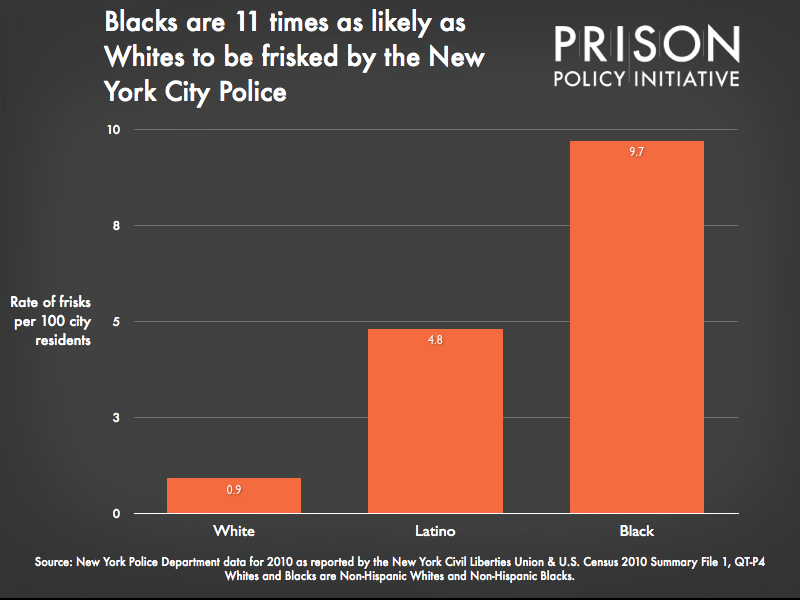
And even larger still when we look at police stops that result in the use of force:
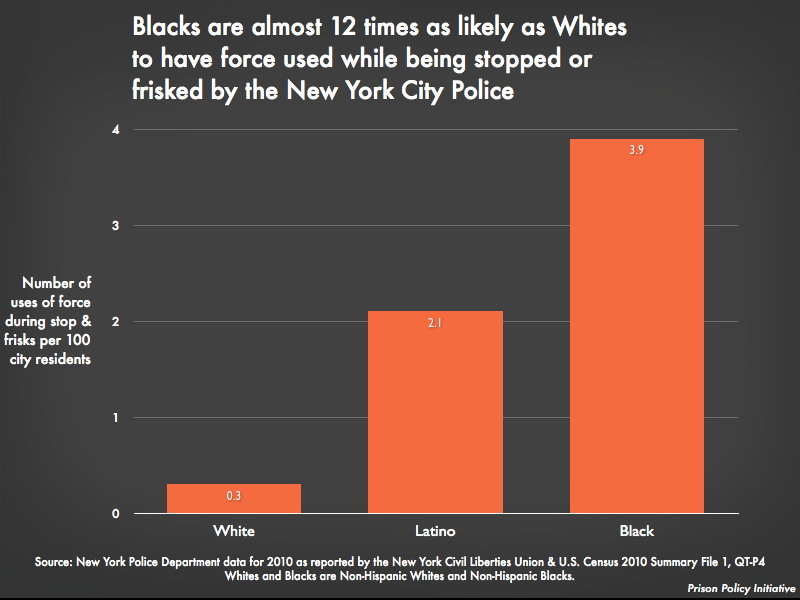
The disparity in the use of force isn’t warranted by differential rates of offending, as we found that Latinos and Blacks were more likely than Whites to experience the use of force without being arrested.
The different experiences of Blacks, Latinos and Whites with stop and frisk are no doubt part of why ending stop and frisk is a priority for Black and Latino voters, but not for politicians who want White support.
And what do New Yorkers get for giving up their civil liberties? It’s not a lot in the way of public safety. 93% of the stops in 2010 did not result in arrest, and the majority of the arrests were for petty offenses. And guns, the main justification for “stop and frisk”? Guns are found in a tiny portion of the stops, about 1 out of every thousand stops in 2011. And the trend isn’t positive. While the police point to the tiny annual increase in the number of gun seized, the percentage of stops that result in a gun being found is plummeting:graph showing that while the number of guns seized during stop and frisks has grown a little from 2003 to 2011, the portion of stops that result in a gun seizure has plummeted:
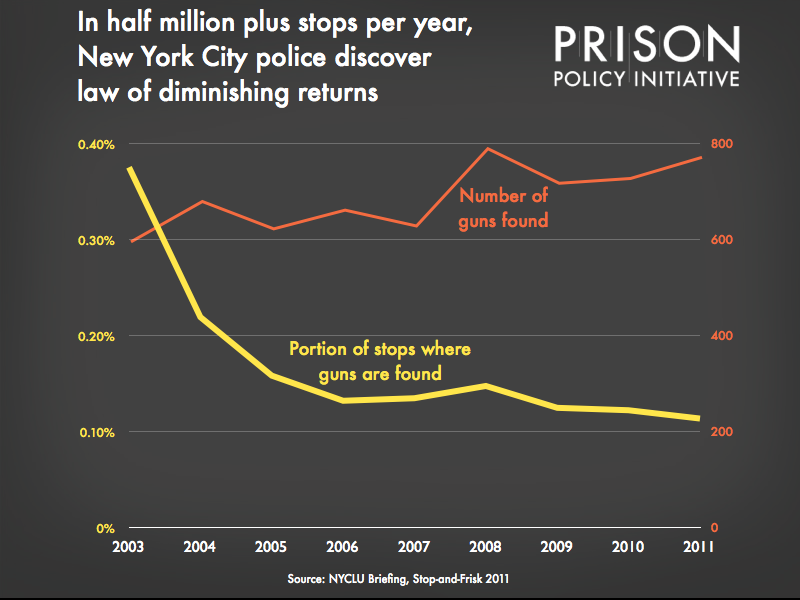
I have no doubt that good police work can find illegal guns. Wholesale “stop and frisk,” though undermines Black and Latino trust in the police without improving public safety. That’s a poor investment in police resources.
Mayor Bloomberg is famous for his big-business style fixation on data and on seeing a high return on investment. Yet, for some reason, he has been reluctant to hold policing strategies up to that same cost vs. results standard. Will his successors be any different?
[* Updated on May 18, 2012 to use Census figures that more closely correspond with how the NYPD assigns people to a race and ethnicity and to add graphs about the racial disparity in frisks and in the use of force.]
The author is Executive Director of the Prison Policy Initiative. This article is one in a series of short articles exploring under-discussed facts about the criminal justice system.



